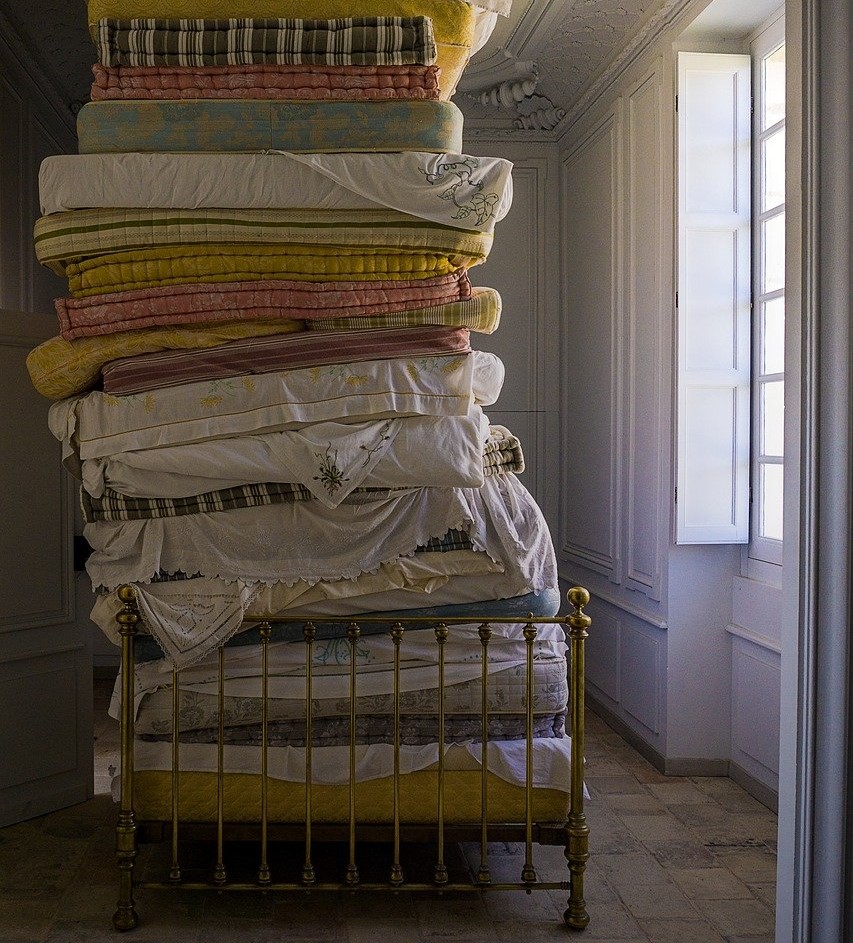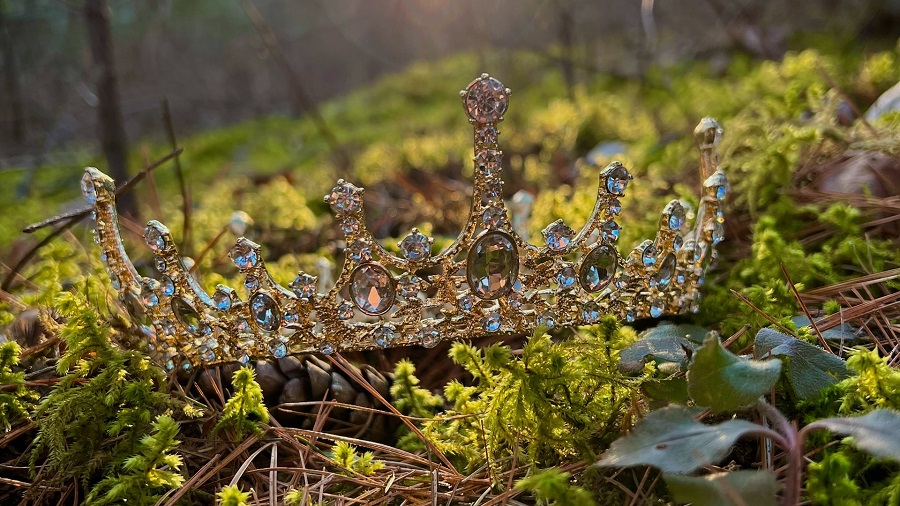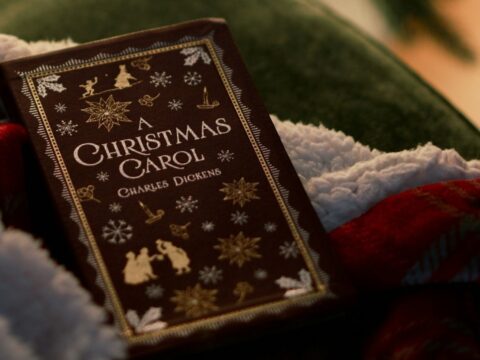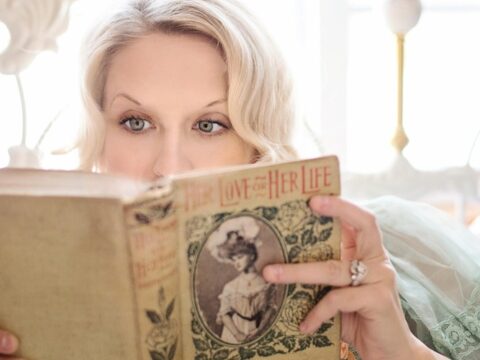Newsflash: I haven’t been getting much sleep lately. Being nine months pregnant and perpetually anxious will do that, but instead of dwelling on my sleepless nights, I’d rather write about a particular Danish fairy tale that features another woman who seriously can’t sleep. Sleeping Beauty’s polar opposite, if you will. Of course I’m referring to “The Princess and the Pea” by the venerable Hans Christian Andersen.
I’ve adored this story from a young age. Its distinct imagery and kooky premise is just delightful, and this story has many, many fantastic adaptations. But today, let’s dive into the original text and see what enduring message a story about peas and featherbeds could possibly hold . . .
In Case You Didn’t Know, this Story is Snappy
I admit I’d never read the full text of Princess and the Pea until I did my preliminary research for this post. But it’s the shortest classic fairy tale I’ve encountered. There are plenty of short fairy tales out there, most of them more obscure, but the truly great ones that everyone has heard tend to have a little more bulk and detail to them. In sharp contrast, the Princess and the Pea isn’t even ten paragraphs long.
In it, a prince searches the world for a “real princess” worthy to be his wife. There’s no explanation of what qualities this guy believes a real princess should possess, and that’s certainly open to interpretation in the modern retellings of this story. But according to Andersen, whatever the prince is looking for, he doesn’t find it.
The prince returns home discouraged. But on a dark and stormy night, who should appear on his doorstep but a girl who claims to be a real princess. She’s bedraggled and soaked through with rain, but for whatever reason, the queen mother decides to give her a try. Queenie concocts a test to verify the girl’s princesshood (unbeknownst to her son?) by stripping the guest bed, placing a pea on the bottom board, and piling twenty mattresses and twenty featherbeds over the secret vegetable.

In the morning, the queen asks Miss Stormy Night if she slept well. The girl says not a chance. In fact, something hard under the mattresses has left her entire body black and blue. Immediately the queen believes in this girl’s royal blood because “nobody but a real princess could be that sensitive.” The prince marries the real princess immediately. Also Andersen informs us that the pea responsible for the marriage is now on display in an art gallery—provided that no one has stolen it? Okay then, Hans, but that’s the whole story!
However, Don’t Be Fooled by the Simplicity of the Princess and the Pea. . .
Despite being fun sized, the straightforwardness of this story can be deceiving. The more I read about this fairy tale, the more questions I had. At a first blush, the tale seems like straight satire. I used to believe that was Andersen’s intention, but now I’m not so sure . . .
On its face, the Princess and the Pea seems to be making fun of royalty. Hans Christian Andersen’s stories are known for their subtle social commentary, and it’s well known that he grew up in poverty and spent the latter part of his life surrounded by aristocrats who never accepted him. With that context, it’s easy to assume that this tale is a snarky statement that “royalty” is based on nothing. Perhaps the royals in this story are so desperate to keep their bloodline pure that their standards for marriage have strayed into the realm of ridiculousness.
Beyond that, what does feeling an uncooked pea through forty pieces of bedding have to do with royal pedigree? Or ruling a kingdom for that matter?
If Anything, this Girl’s Sensitivity Sounds like a Curse
I stumbled across some interesting theories about this princess’s freakishly delicate skin. It’s the most fantastical part of the story, and some people think that this princess might be on the spectrum with a nasty case of sensory processing disorder. Or maybe it was all a ruse. If you think about it, it makes no sense that a girl this sensitive would brave a torrential rainstorm on foot to present herself at the palace gate—or even be capable of such an act. This is probably why so many analysts believe that she’s a deceiver who manipulated a weird situation to her advantage.
In some versions of this story, a magical animal helper tips off the would-be princess about the pea so she can claim she didn’t sleep well and marry the prince. Many modern adaptations run with the idea that this princess or somebody else finds out the queen’s secret and rigs the test for a whole variety of reasons. Maybe the “real princess” is just a common peasant and it’s the royals who get hoodwinked in their own princess test.

But Andersen’s original story has no evidence that his heroine is a liar. Andersen presents her sensitivity with a completely straight face. No gaffs or tricks here. She really does feel the pea, and it really does bruise her. If you think about it, that would be an extremely hard characteristic to live with. There are other versions of the Princess and the Pea that reinforce the horror aspect of this sensitivity. In one version from India, the three sensitive wives of a king are knocked unconscious by a falling lotus petal, burned by moonlight, and wounded by the mere sound of a pestle grinding grain. In another version, the most sensitive of three princes dies from a fatal wound caused by a single hair underneath seven mattresses. Um, what?!
So What was Andersen’s Point of Making the Princess this Sensitive?
In the case of the Princess and the Pea, how exactly does a person become this hypersensitive? I used to think Andersen was drawing attention to the princess’s total lack of resilience. Only a remarkably spoiled woman who’s received nonstop pampering her entire life could be THAT sensitive. Or at the very least she’s never been exposed to hardship.
But Andersen’s goal wasn’t to make this female character pathetic. In fact, his true intention was for her physical sensitivity to be symbolic of her compassion.
Multiple analyses of Princess and the Pea draw attention to Andersen’s motives in this story: he isn’t trying to hate on all royalty. He’s subtly drawing attention to what makes a good ruler. A person who notices when something is amiss and feels deeply will make a better queen than a beautiful woman with expensive taste alone.
It kind of rubs me the wrong way that the princess is so quick to complain about the bad mattress. But what if her openness to tell the truth is the point of the whole story?

Perhaps this Girl WOULD Make a Great Royal
Not only is she able to feel something wrong through many, many layers of obstruction. She also senses something miniscule that has the ability to grow if it could just be put into fertile soil. A pea is a seed after all. Not only is Andersen drawing attention to the princess’s sensitivity to minute details that may affect a kingdom, he’s also revealing that she’s willing to speak up about problems when others might not. AND give the realm a chance to grow in the right direction.
This potential for growth can have multiple interpretations too. Maybe she is the correct person to right potential wrongs alongside her princely husband. But it’s not lost on me that this princess’s potential is revealed in the bedroom. Her compassion may be a wonderful asset to the kingdom, but she also needs to produce heirs to keep the royal bloodline going. I’d bet money that Andersen’s metaphor of the pea—a symbol of growth put in a bed—alludes to the princess’s fertility.
Then again, this heroine is much more than just a pretty girl waiting to get pregnant. Sure, she’s bruised black and blue when she emerges from her battle with the pea (more references to the pains women suffer in childbirth?). But she’s also a wonderfully active female character. Instead of waiting for a guy to climb her hair or bring her a shoe, this princess braves a thunderstorm and arrives right at his door. She finds him, which I certainly appreciate. And when there’s a problem with the bed, she tells the queen about it right away. As a real princess, she would be entitled to speak her mind to a fellow royal lady. So I guess the shoe fits after all.
It’s a Fun Story, Even at Face Value
There’s a reason why the Princess and the Pea has withstood the test of time. It’s a zany, happy little story. And its quirkiness stands out amongst all the other dark and angsty fairy tales. Plus the image of a tower of mattresses with a huge ladder to reach the top is one that children everywhere adore for good reason.

I also like the final image of the pea in its place of honor at the kingdom’s art gallery. Probably with its own royal guards too. Part of me reads that ending and thinks just . . . why? The other half of me is tempted to write a book about why this relic is valuable enough to steal . . . Food for thought. ❧




